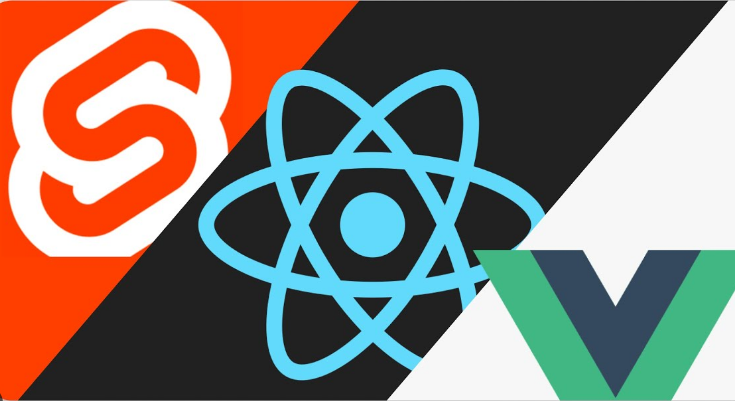When it comes to building user interfaces for web applications, Vue.js, React, and Svelte are among the most popular choices. While they share the common goal of enhancing UI development, each has its unique features and advantages that make it suitable for specific types of projects. In this post, we’ll explore the key differences between these three JavaScript libraries/frameworks to help you make an informed decision for your next web development project.
Vue.js: The Progressive JavaScript Framework
Vue.js is a progressive JavaScript framework designed to be incrementally adoptable. This makes it particularly easy to integrate with projects using other libraries or existing projects.
Key Features of Vue.js:
- Lightweight Architecture: Vue.js is easy to pick up and integrate, making it an excellent choice for projects that require a quick start.
- Reactive Component Model: Vue.js uses a reactive data-binding system. When the data changes, the UI updates automatically, reducing the amount of boilerplate code.
- Strong Community Support: With a large and active community, Vue.js offers a wealth of tutorials, forums, and third-party libraries, making it easier to find help and resources.
React: The JavaScript Library for Building UIs
Developed by Facebook, React is designed for building complex and large-scale applications. It has gained immense popularity and is widely used in the industry.
Key Features of React:
- Virtual DOM: React uses a virtual DOM to optimize rendering and improve application performance.
- Component-Based Architecture: React promotes reusability through a component-based structure, making it easier to manage large codebases.
- Rich Ecosystem: React has a strong ecosystem, including tools like Redux for state management and Jest for testing, providing a comprehensive development environment.
Svelte: The Compiler for High-Performance Web Apps
Svelte is a relatively new entrant but has quickly gained attention for its performance advantages and simplicity.
Key Features of Svelte:
- Compile-Time Optimization: Unlike Vue.js and React, which use runtime interpretation, Svelte compiles components to optimized JavaScript at build time.
- No Virtual DOM: Svelte does away with the virtual DOM, resulting in faster runtime performance.
- Simplified Syntax: Svelte offers a simplified syntax, making it easier to write and read code, thereby speeding up the development process.
Performance Considerations
While Svelte may have an edge in terms of runtime performance due to its compile-time optimization, both Vue.js and React are highly performant and are optimized for complex applications.
Making Your Choice: Vue.js, React, or Svelte?
The choice between Vue.js, React, and Svelte will depend on various factors such as the complexity of your project, your team’s expertise, and specific performance requirements.
- Choose Vue.js if:
- You want a lightweight, easy-to-learn framework.
- You appreciate reactive programming and automatic UI updates.
- Choose React if:
- You are building a large, complex application.
- You need a strong ecosystem and community support.
- Choose Svelte if:
- Performance is a critical factor for your application.
- You prefer a simplified, easy-to-understand syntax.
In conclusion, Vue.js, React, and Svelte each offer unique advantages and are suited for different types of projects. By understanding their key features and strengths, you can choose the one that best aligns with your project needs.


